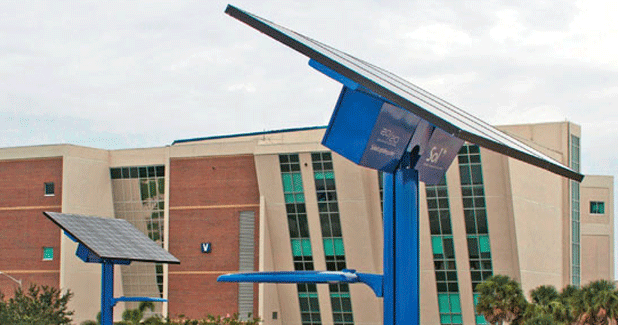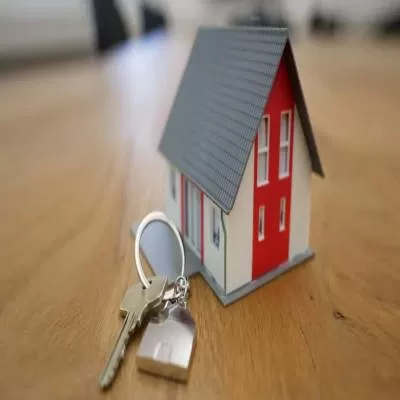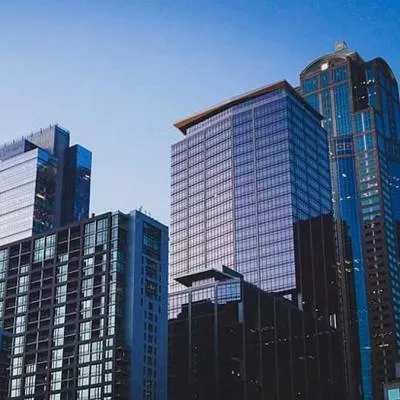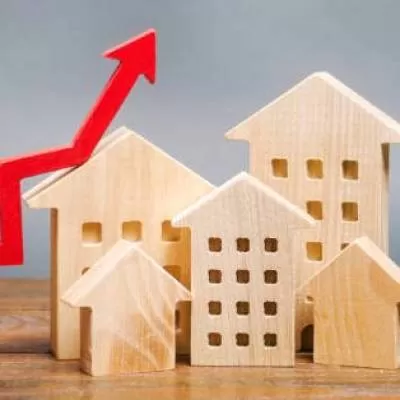- Home
- Real Estate
- Green Ratings

Green Ratings
A new report claims a distinct disconnect between the ratings of green buildings and their performance on ground. Is it merely teething trouble in a construction industry newly turning eco-conscious or is green becoming an excuse to get government sops and sell a brand? We take a closer look.
Is building green just a whitewash? That´s the question many are asking after a report by non-government body Centre for Science and Environment (CSE), which has found a disconnect between the design of buildings rated green by the Indian Green Building Council (IGBC) and their actual performance.
Some standout examples from the report: CSE claims that the IGBC gold-rated Wipro Technologies´ KDC Tower exceeds the BEE-prescribed minimum energy- efficiency benchmark for BPO buildings in a warm and humid climate by 880 per cent. A clarification note from IGBC responds that Wipro Technologies´ KDC Tower reported the energy consumed by it as well as four other buildings on the campus, whereas the CSE analysis assumes that the electricity has been consumed by only one building. Also, IT parks behave differently in terms of energy consumption than BPOs, and perhaps future BEE benchmarks will reflect this fact.
Another example: According to CSE, the ITC Saharanpur factory exceeds the BEE-prescribed minimum energy efficiency benchmark for offices in a composite climate by 99 per cent. IGBC´s response: ITC Saharanpur has reported the total energy consumed by the building, which includes the factory process loads that have nothing to do with the performance of the building.
One more: CSE says Wipro Technologies´ Gurgaon office exceeds the BEE-prescribed minimum energy efficiency benchmark for BPOs in composite climates by 144 per cent. Here, IGBC says that CSE has founded its calculations on the behaviour of a daytime office building, which is unrealistic as an IT office works 16-24 hours a day. Also, the energy consumed reported includes server process loads, which increase over time and should not be included to estimate building performance.
Argument and counter-argument aside, the situation certainly merits a closer look.
Rating vs performance
¨With all these buildings getting green ratings, we wanted to understand what it exactly means in terms of performance and efficiency,¨ says Anumita Roychowdhury, Executive Director, CSE. ¨The first stunning realisation was that there was no process by which the buildings actually shared any data to ascertain their real performance. That is the reason we engaged with IGBC. Subsequently, about a year ago, IGBC started putting out data of 50-odd selected buildings and that is the only database that exists. To calculate the energy performance index, we took the star label system of the Bureau of Energy Efficiency, which is a voluntary scheme right now but expected to become regulation in future. We found that 48 per cent of the buildings did not even meet the minimum benchmark of one star. That was an eye-opener and gives us a clear message in terms of policy and regulation.¨ (Read on page 62 for CSE Analysis of Leed-IGBC performance monitoring data accessed on January 2014.) ¨Some green buildings perform below the designed parameters,¨ concedes
D Nirmal Ram, National President, ISHRAE. ¨As such the vision is to monitor performance at regular intervals. Energy and water consumption can be monitored digitally, captured on the Web and compared with the building area and occupancy for different zones. While energy-saving concepts need to be in the DNA of the building, they will require to be monitored at the owner developer level instead of policing at the rating agency level.¨
¨Without clear, transparent and stringent post-construction performance monitoring,¨ adds Roychowdhury, ¨the entire, expensive exercise of green rating is getting us nowhere with no real benefit.¨
Hankering for handouts
While the residents of non-performing buildings may fall short on benefits, developers certainly don´t, thanks to government handouts. For instance, the Ministry of Environment & Forests provides faster clearances for green buildings. The governments of the states of Punjab and Rajasthan and the urban local body of Noida and Greater Noida give developers of green buildings (with 4 or 5-star rating from GRIHA) constructed on plot area over 5,000 sq m an additional 5 per cent floor area ratio. Developers in Pimpri-Chinchwad Municipal Corporation get discounts on the premium amount of building permission charges, varying as per the level of GRIHA rating, while owners of flats in green buildings get a discount of 10 per cent on property tax. And so on.
¨State governments promise extra FSI as an incentive for green rating and that is the most worrying part of it,¨ says Roychowdhury. ¨If you are not able to ensure that their performance is efficient, it means you are locking up enormous inefficiency in the extra built-up area and you cannot undo that.¨ Adds Avikal Somvanshi, Senior Research Associate, CSE, ¨It would be a criminal waste of public money if any sops were to be given to buildings that are green only on paper.¨
The rating process
What measures, then, are green-rating bodies actually taking to ensure that rating meets expected outcomes?
¨Precertification is worked out before the launch of the project, like IGBC, USGBC and any other rating business,¨ explains Syed Mohamed Beary, Chairman, Bengaluru Chapter, IGBC and Chairman & Managing Director, Bearys Group. ¨Based on the precertification, upon the completion of the building, a monitoring agency arrives and based on their report, we give the certification. After the certifications, you do find some black sheep. For instance, there´s a classic case where the project was supposed to be 1 million sq ft; he built one building of 100,000 sq ft and got a Gold pre-certification and then claimed the entire project is green, which is actually a misrepresentation. People take the pre-certification and then later do not take certification, which is again hoodwinking the client. In the Bengaluru chapter of IGBC, we started a process a year-and-a-half ago where the commissioning agent has to go annually to certify whether what is being claimed is being achieved. Fifty buildings are being watched.¨ While some people are receptive to such visits, others are not. ¨There are certain corporate houses who do not allow us to send our people,¨ he reveals. ¨They are not like developers trying to hoodwink us but they are people running R&D and they have their own methodology. They sometimes do much better than what we aspire to be. Either way, if we do it for five years, the market will mature and even the developers will see the tangible benefits.¨ As for the CSE report, Beary says with candour, ¨You must understand that what we do in IGBC is voluntary and not paid work. In voluntary work, we can´t bring in legislation that says you do it or get out. We can´t do that because we have a long-term perspective. We are looking at the larger interest of the industry. The fact is that there are a good number of people that have performed much better than what is being certified.¨
A developer himself, Beary gives the example of his company´s building, Bearys Global Research Triangle. ¨In the pre-certification time, we were supposed to get 48 per cent and we got 51. As per the certification, we have 54 per cent energy-efficiency, 41.5 per cent less water usage and it is a zero discharge building. Today, the 54 per cent has become 63 and 41.5 has become 71.5 per cent. The building is 1 million sq ft and as a thumb rule we are supposed to have 12,000 kW of power. We were 60 per cent occupied and should have had 7,200 kva power; our meter never crossed 2,000. Even though we got 4,000 kva power, our tenant didn´t agree with our point of view. We finally got 4,000 and they are paying minimum demand charge for 4,000.¨
In fact, in India, final IGBC green ratings are given after a physical audit of the building, unlike in the US where only the green design is certified. ¨We introduced this measure in 2007, after recognising the need for more stringent checks,¨ shares S Srinivas, Deputy Executive Director, Confederation of Indian Industry, CII-Sohrabji Godrej Green Business Centre. ¨Such pre-occupancy audits show up areas where there is scope for improvement, and have helped developers who address the lacunae to achieve even higher green rating levels than they initially envisaged.¨
Similarly, at GRIHA, projects are awarded only a provisional rating after the submission and evaluation of simulation files, predictions and submitted documents. ¨The final rating is awarded after one year of occupancy of the project on the production of actual bills and an audit report by a third-party, BEE-certified auditor,¨ clarifies Mili Majumdar, Director, Teri, and Secretary cum Treasurer, ADarsh. Essentially, developers must prove that they have achieved the energy and water saving they envisaged through the adoption of efficient technology and equipment. Such data is freely accessible on the GRIHA website. Further, GRIHA mandates building re-assessment after five years to maintain its rating status. ¨GRIHA is also actively pursuing state authorities to close the escape routes for beneficiaries of rating incentives who default,¨ she adds. ¨Different state governments are contemplating introducing penalties for such defaulters.¨
The developers´ take
For their part, responsible developers insist that they are vigilant when it comes to monitoring energy-efficiency in their green projects and that their end users enjoy better and sustained quality of life and energy savings.
¨At Mahindra Lifespaces, we monitor and report energy consumption in the form of direct and indirect energy during the construction phase,¨ says Riyaz Bhada, Head of Design & Sustainability, Mahindra Lifespace Developers. ¨Based on the green features incorporated, the average energy savings for our IGBC Gold or Platinum-rated buildings is around 25-30 per cent. As the construction of any project is divided into phases, the facilities management team monitors the actual use of energy and water of the buildings completed before final handover and commissioning.
As part of the process to obtain the final certificate, a report of building performance has to be submitted to the rating agency. We conduct this study through an independent agency. Once the building is pre-certified, a progress report has to be submitted to the agency every six months. At the final commissioning stage, the agency conducts a physical audit of the entire project to validate the adherence of green features. The certification remains valid for five years after which it has to be renewed.¨ ¨For most of our buildings, we have tried to go for a core and shell certification,¨ says Harshavardhan Neotia, Chairman, Ambuja Neotia Group. ¨This means we need to apply green factors at a preliminary stage. The benefits percolate to the end users in the long run. Performance of green buildings can be measured in various ways to calculate energy efficiency. We find that our operations and maintenance costs in our green buildings are significantly lower than our other developments.¨
Green building has its share of challenges though. ¨When it comes to construction, material is a challenge because people come with the IGBC logo or green colour brochure and claim their product is green, which is not the case,¨ says Beary. ¨The US Green Building Council (USGBC) has 30,000 green compliant products; we have just about 300. We have a long way to go. For monitoring the building, we require an integrated building management system. There are very few operators like Siemens and Honeywell. That has become a major challenge. Even after you do the best of jobs, one is the cost factor and, second, there are few people to operate it. But with many people coming into the segment, it will improve.¨
The upside
Indeed, there is good news ahead, as Sanjay Seth, Energy Economist, Bureau of Energy Efficiency (BEE), points out. ¨Worldwide, the trend has been for the design of green buildings and operations to be kept separate, with good reason,¨ he reasons. ¨It has been an uphill task to get developers to even design green. And a well-designed building is sure to consume less energy than one designed with no thought for energy conservation. So, agencies have made a sensible start with design.¨
¨Green building certifications in India have got the design stage controls right,¨ affirms Cesare Saccani, Managing Director, ICMQ Certification India, the India subsidiary of ICMQ Spa, a construction and building materials certification and inspection body, and co-founder of the Italian Green Building Council. In India, ICMQ has collaborated with BEE for the collection of data on 1,200 buildings in different categories (office buildings, malls, hotels, hospitals, data centre and residential) in five climatic zones. ¨Next, they must include more stringent site monitoring activity to verify that the design stage ´simulated performance´ is actually achieved.¨
As BEE has developed the Energy Conservation Building Code (ECBC), the standard has been fully adopted by GRIHA and IGBC. ¨Now, we are working on creating a cadre of independent ECBC-certified professionals as verifiers at the design, construction and completion levels; and on simplifying and standardising the process for verifying building compliance with energy codes,¨ says Seth. ¨We are also developing new bandwidths based on the regression and distribution-based method to introduce performance-based ratings that take cognisance of multiple parameters affecting building energy consumption like occupancy, process loads, etc, and that allow for meaningful comparisons with a peer group.¨
Also, what about the environmental performance of building materials? International standards exist for environmental claims (ISO 14021), eco-labelling (ISO 14024) and environmental product declaration (ISO 17025). Many countries consider such standards and specify product environmental performance levels, testing methods and laboratories for measuring products. ¨LEED, IGBC and GRIHA accept the manufacturer´s self-declaration of the material performance, but who is controlling such claims? Third-party verification of environmental claims for building materials is important. A product´s safety performance is also becoming relevant,¨ says Saccani. ICMQ India is ready to launch ´Get It Green´ in India, a product certification scheme based on the ISO 14020 series of international standards to provide the Indian market with a solution proven in Europe.
Greening the future
Going forward, how does one ensure that green projects live up to their promise?
¨We should have both incentives and penalties,¨ says Beary. ¨If we give people incentives and they do not perform, or try to exploit the situation for selfish ends, there should be a penalty.¨
¨There are many state governments incentivising developers for going green; however a common thread is lack of stringent and transparent monitoring of commissioned buildings that can bring out the common interest of being truly green in India,¨ points out Bhada. ¨Green rating agencies should revisit the project´s certification annually after occupancy rather than the current five years.¨
CSE would agree. Roychowdhury tells us how the Noida authority has already set up a system of penalty for non-compliance during a green building´s five-year review. ¨We need a rigorous, regulatory framework for implementation and post construction compliance,¨ she asserts. ¨It must be combined with annual energy audits where buildings must submit all data for public scrutiny to a designated authority in the state and take corrective measures. You need to link it with an official system of benchmarking, like the mandated star levels of energy-efficiency.¨
For his part, Beary is optimistic about the future. ¨How long can being green be just a marketing gimmick?¨ he wonders. ¨You can fool the guys only once! The end user has become very conscious and more knowledgeable than the developer.¨ As for the recent controversy, he adds, ¨On January 1 and February 2, the core committee of IGBC is meeting in Chennai primarily to decide how to rationalise the process and make it more authenticated and transparent. We are not thinking it is all going great. But ultimately a green building should be seen from the end user´s perspective. Until and unless the end user insists, monitors and gives the performance certificate, no green building can work well.¨
Apart from the 50 buildings mentioned earlier, IGBC has certified 380 projects. When asked if there are any plans to monitor the rest, Beary responds, ¨In the meetings, we will decide on a campaign to bring this aspect into the public domain to help both developers and end users. Then we will expand from 50 to a larger number.¨ In future, he believes the government, both at the state and Central levels, must make at least basic aspects of green mandatory. ¨A new chapter has been adopted in the National Building Code making green building a mandate in all corporations; it is in the final stage of acceptance.¨
Roychowdhury too believes that green measures should be far more pervasive. ¨The challenge is to mainstream green measures, not implement them in a few buildings,¨ she says. ¨When you say that 70 per cent of future buildings are yet to be built in India, it is important that each one should have some basic green measures.¨ In sum, Neotia says, ¨It will take a huge effort and an effective monitoring system to create a green India.¨ We couldn´t agree more.
Quick Bytes
- Government sops are being given to green rated buildings.
- Some so-called green buildings are actually energy guzzlers.
- Along with sops, penalties should be levied for defaulting on rating incentives recd.
- Energy-saving
- concepts need to be inbuilt into design.
- Rating agencies should revisit the certification annually after occupancy rather than the current five years.
Performance assessment
Riyaz Bhada, Head of Design & Sustainability, Mahindra Lifespace Developers Ltd, shares the ´Living Building Assessment´ for the Mahindra Splendour project to monitor and manage performance on key environmental parameters (considering building life of 50 years). The assessment is undertaken for buildings completed and operational for more than a year. It provides the opportunity to validate whether the features promised as part of design are incorporated and gives an overall perspective on resource savings of the project. Here´s a snapshot:
| Energy savings | 96,221 MWh |
| Greenhouse gas (GHG) reduction | 86,600 tCO2 |
| Water savings | 1,405 million liters |
| Day lighting | >300 lux level |
| Indoor air quality | RSPM 40-70µg/m3 |
- Green Ratings
- Seeing Red
- Green Buildings
- Construction
- CSE
- Indian Green Building Council
- IGBC
- Wipro Technologies
- KDC Tower
- BEE
- BPO
- Anumita Roychowdhury
- Leed
- D Nirmal Ram
- ISHRAE
- Energy
- DNA
- Environment
- Forests
- Pimpri
- Chinchwad
- Municipal Corporation
- FSI
- Avikal Somvanshi
- USGBC
- Syed Mohamed Beary
- Bearys Group
- S Srinivas
- Confederation of Indian Industry
- CII
- Sohrabji
- Godrej,
Seeing Red? A new report claims a distinct disconnect between the ratings of green buildings and their performance on ground. Is it merely teething trouble in a construction industry newly turning eco-conscious or is green becoming an excuse to get government sops and sell a brand? We take a closer look. Is building green just a whitewash? That´s the question many are asking after a report by non-government body Centre for Science and Environment (CSE), which has found a disconnect between the design of buildings rated green by the Indian Green Building Council (IGBC) and their actual performance. Some standout examples from the report: CSE claims that the IGBC gold-rated Wipro Technologies´ KDC Tower exceeds the BEE-prescribed minimum energy- efficiency benchmark for BPO buildings in a warm and humid climate by 880 per cent. A clarification note from IGBC responds that Wipro Technologies´ KDC Tower reported the energy consumed by it as well as four other buildings on the campus, whereas the CSE analysis assumes that the electricity has been consumed by only one building. Also, IT parks behave differently in terms of energy consumption than BPOs, and perhaps future BEE benchmarks will reflect this fact. Another example: According to CSE, the ITC Saharanpur factory exceeds the BEE-prescribed minimum energy efficiency benchmark for offices in a composite climate by 99 per cent. IGBC´s response: ITC Saharanpur has reported the total energy consumed by the building, which includes the factory process loads that have nothing to do with the performance of the building. One more: CSE says Wipro Technologies´ Gurgaon office exceeds the BEE-prescribed minimum energy efficiency benchmark for BPOs in composite climates by 144 per cent. Here, IGBC says that CSE has founded its calculations on the behaviour of a daytime office building, which is unrealistic as an IT office works 16-24 hours a day. Also, the energy consumed reported includes server process loads, which increase over time and should not be included to estimate building performance. Argument and counter-argument aside, the situation certainly merits a closer look. Rating vs performance ¨With all these buildings getting green ratings, we wanted to understand what it exactly means in terms of performance and efficiency,¨ says Anumita Roychowdhury, Executive Director, CSE. ¨The first stunning realisation was that there was no process by which the buildings actually shared any data to ascertain their real performance. That is the reason we engaged with IGBC. Subsequently, about a year ago, IGBC started putting out data of 50-odd selected buildings and that is the only database that exists. To calculate the energy performance index, we took the star label system of the Bureau of Energy Efficiency, which is a voluntary scheme right now but expected to become regulation in future. We found that 48 per cent of the buildings did not even meet the minimum benchmark of one star. That was an eye-opener and gives us a clear message in terms of policy and regulation.¨ (Read on page 62 for CSE Analysis of Leed-IGBC performance monitoring data accessed on January 2014.) ¨Some green buildings perform below the designed parameters,¨ concedes D Nirmal Ram, National President, ISHRAE. ¨As such the vision is to monitor performance at regular intervals. Energy and water consumption can be monitored digitally, captured on the Web and compared with the building area and occupancy for different zones. While energy-saving concepts need to be in the DNA of the building, they will require to be monitored at the owner developer level instead of policing at the rating agency level.¨ ¨Without clear, transparent and stringent post-construction performance monitoring,¨ adds Roychowdhury, ¨the entire, expensive exercise of green rating is getting us nowhere with no real benefit.¨ Hankering for handouts While the residents of non-performing buildings may fall short on benefits, developers certainly don´t, thanks to government handouts. For instance, the Ministry of Environment & Forests provides faster clearances for green buildings. The governments of the states of Punjab and Rajasthan and the urban local body of Noida and Greater Noida give developers of green buildings (with 4 or 5-star rating from GRIHA) constructed on plot area over 5,000 sq m an additional 5 per cent floor area ratio. Developers in Pimpri-Chinchwad Municipal Corporation get discounts on the premium amount of building permission charges, varying as per the level of GRIHA rating, while owners of flats in green buildings get a discount of 10 per cent on property tax. And so on. ¨State governments promise extra FSI as an incentive for green rating and that is the most worrying part of it,¨ says Roychowdhury. ¨If you are not able to ensure that their performance is efficient, it means you are locking up enormous inefficiency in the extra built-up area and you cannot undo that.¨ Adds Avikal Somvanshi, Senior Research Associate, CSE, ¨It would be a criminal waste of public money if any sops were to be given to buildings that are green only on paper.¨ The rating process What measures, then, are green-rating bodies actually taking to ensure that rating meets expected outcomes? ¨Precertification is worked out before the launch of the project, like IGBC, USGBC and any other rating business,¨ explains Syed Mohamed Beary, Chairman, Bengaluru Chapter, IGBC and Chairman & Managing Director, Bearys Group. ¨Based on the precertification, upon the completion of the building, a monitoring agency arrives and based on their report, we give the certification. After the certifications, you do find some black sheep. For instance, there´s a classic case where the project was supposed to be 1 million sq ft; he built one building of 100,000 sq ft and got a Gold pre-certification and then claimed the entire project is green, which is actually a misrepresentation. People take the pre-certification and then later do not take certification, which is again hoodwinking the client. In the Bengaluru chapter of IGBC, we started a process a year-and-a-half ago where the commissioning agent has to go annually to certify whether what is being claimed is being achieved. Fifty buildings are being watched.¨ While some people are receptive to such visits, others are not. ¨There are certain corporate houses who do not allow us to send our people,¨ he reveals. ¨They are not like developers trying to hoodwink us but they are people running R&D and they have their own methodology. They sometimes do much better than what we aspire to be. Either way, if we do it for five years, the market will mature and even the developers will see the tangible benefits.¨ As for the CSE report, Beary says with candour, ¨You must understand that what we do in IGBC is voluntary and not paid work. In voluntary work, we can´t bring in legislation that says you do it or get out. We can´t do that because we have a long-term perspective. We are looking at the larger interest of the industry. The fact is that there are a good number of people that have performed much better than what is being certified.¨ A developer himself, Beary gives the example of his company´s building, Bearys Global Research Triangle. ¨In the pre-certification time, we were supposed to get 48 per cent and we got 51. As per the certification, we have 54 per cent energy-efficiency, 41.5 per cent less water usage and it is a zero discharge building. Today, the 54 per cent has become 63 and 41.5 has become 71.5 per cent. The building is 1 million sq ft and as a thumb rule we are supposed to have 12,000 kW of power. We were 60 per cent occupied and should have had 7,200 kva power; our meter never crossed 2,000. Even though we got 4,000 kva power, our tenant didn´t agree with our point of view. We finally got 4,000 and they are paying minimum demand charge for 4,000.¨ In fact, in India, final IGBC green ratings are given after a physical audit of the building, unlike in the US where only the green design is certified. ¨We introduced this measure in 2007, after recognising the need for more stringent checks,¨ shares S Srinivas, Deputy Executive Director, Confederation of Indian Industry, CII-Sohrabji Godrej Green Business Centre. ¨Such pre-occupancy audits show up areas where there is scope for improvement, and have helped developers who address the lacunae to achieve even higher green rating levels than they initially envisaged.¨ Similarly, at GRIHA, projects are awarded only a provisional rating after the submission and evaluation of simulation files, predictions and submitted documents. ¨The final rating is awarded after one year of occupancy of the project on the production of actual bills and an audit report by a third-party, BEE-certified auditor,¨ clarifies Mili Majumdar, Director, Teri, and Secretary cum Treasurer, ADarsh. Essentially, developers must prove that they have achieved the energy and water saving they envisaged through the adoption of efficient technology and equipment. Such data is freely accessible on the GRIHA website. Further, GRIHA mandates building re-assessment after five years to maintain its rating status. ¨GRIHA is also actively pursuing state authorities to close the escape routes for beneficiaries of rating incentives who default,¨ she adds. ¨Different state governments are contemplating introducing penalties for such defaulters.¨ The developers´ take For their part, responsible developers insist that they are vigilant when it comes to monitoring energy-efficiency in their green projects and that their end users enjoy better and sustained quality of life and energy savings. ¨At Mahindra Lifespaces, we monitor and report energy consumption in the form of direct and indirect energy during the construction phase,¨ says Riyaz Bhada, Head of Design & Sustainability, Mahindra Lifespace Developers. ¨Based on the green features incorporated, the average energy savings for our IGBC Gold or Platinum-rated buildings is around 25-30 per cent. As the construction of any project is divided into phases, the facilities management team monitors the actual use of energy and water of the buildings completed before final handover and commissioning. As part of the process to obtain the final certificate, a report of building performance has to be submitted to the rating agency. We conduct this study through an independent agency. Once the building is pre-certified, a progress report has to be submitted to the agency every six months. At the final commissioning stage, the agency conducts a physical audit of the entire project to validate the adherence of green features. The certification remains valid for five years after which it has to be renewed.¨ ¨For most of our buildings, we have tried to go for a core and shell certification,¨ says Harshavardhan Neotia, Chairman, Ambuja Neotia Group. ¨This means we need to apply green factors at a preliminary stage. The benefits percolate to the end users in the long run. Performance of green buildings can be measured in various ways to calculate energy efficiency. We find that our operations and maintenance costs in our green buildings are significantly lower than our other developments.¨ Green building has its share of challenges though. ¨When it comes to construction, material is a challenge because people come with the IGBC logo or green colour brochure and claim their product is green, which is not the case,¨ says Beary. ¨The US Green Building Council (USGBC) has 30,000 green compliant products; we have just about 300. We have a long way to go. For monitoring the building, we require an integrated building management system. There are very few operators like Siemens and Honeywell. That has become a major challenge. Even after you do the best of jobs, one is the cost factor and, second, there are few people to operate it. But with many people coming into the segment, it will improve.¨ The upside Indeed, there is good news ahead, as Sanjay Seth, Energy Economist, Bureau of Energy Efficiency (BEE), points out. ¨Worldwide, the trend has been for the design of green buildings and operations to be kept separate, with good reason,¨ he reasons. ¨It has been an uphill task to get developers to even design green. And a well-designed building is sure to consume less energy than one designed with no thought for energy conservation. So, agencies have made a sensible start with design.¨ ¨Green building certifications in India have got the design stage controls right,¨ affirms Cesare Saccani, Managing Director, ICMQ Certification India, the India subsidiary of ICMQ Spa, a construction and building materials certification and inspection body, and co-founder of the Italian Green Building Council. In India, ICMQ has collaborated with BEE for the collection of data on 1,200 buildings in different categories (office buildings, malls, hotels, hospitals, data centre and residential) in five climatic zones. ¨Next, they must include more stringent site monitoring activity to verify that the design stage ´simulated performance´ is actually achieved.¨ As BEE has developed the Energy Conservation Building Code (ECBC), the standard has been fully adopted by GRIHA and IGBC. ¨Now, we are working on creating a cadre of independent ECBC-certified professionals as verifiers at the design, construction and completion levels; and on simplifying and standardising the process for verifying building compliance with energy codes,¨ says Seth. ¨We are also developing new bandwidths based on the regression and distribution-based method to introduce performance-based ratings that take cognisance of multiple parameters affecting building energy consumption like occupancy, process loads, etc, and that allow for meaningful comparisons with a peer group.¨ Also, what about the environmental performance of building materials? International standards exist for environmental claims (ISO 14021), eco-labelling (ISO 14024) and environmental product declaration (ISO 17025). Many countries consider such standards and specify product environmental performance levels, testing methods and laboratories for measuring products. ¨LEED, IGBC and GRIHA accept the manufacturer´s self-declaration of the material performance, but who is controlling such claims? Third-party verification of environmental claims for building materials is important. A product´s safety performance is also becoming relevant,¨ says Saccani. ICMQ India is ready to launch ´Get It Green´ in India, a product certification scheme based on the ISO 14020 series of international standards to provide the Indian market with a solution proven in Europe. Greening the future Going forward, how does one ensure that green projects live up to their promise? ¨We should have both incentives and penalties,¨ says Beary. ¨If we give people incentives and they do not perform, or try to exploit the situation for selfish ends, there should be a penalty.¨ ¨There are many state governments incentivising developers for going green; however a common thread is lack of stringent and transparent monitoring of commissioned buildings that can bring out the common interest of being truly green in India,¨ points out Bhada. ¨Green rating agencies should revisit the project´s certification annually after occupancy rather than the current five years.¨ CSE would agree. Roychowdhury tells us how the Noida authority has already set up a system of penalty for non-compliance during a green building´s five-year review. ¨We need a rigorous, regulatory framework for implementation and post construction compliance,¨ she asserts. ¨It must be combined with annual energy audits where buildings must submit all data for public scrutiny to a designated authority in the state and take corrective measures. You need to link it with an official system of benchmarking, like the mandated star levels of energy-efficiency.¨ For his part, Beary is optimistic about the future. ¨How long can being green be just a marketing gimmick?¨ he wonders. ¨You can fool the guys only once! The end user has become very conscious and more knowledgeable than the developer.¨ As for the recent controversy, he adds, ¨On January 1 and February 2, the core committee of IGBC is meeting in Chennai primarily to decide how to rationalise the process and make it more authenticated and transparent. We are not thinking it is all going great. But ultimately a green building should be seen from the end user´s perspective. Until and unless the end user insists, monitors and gives the performance certificate, no green building can work well.¨ Apart from the 50 buildings mentioned earlier, IGBC has certified 380 projects. When asked if there are any plans to monitor the rest, Beary responds, ¨In the meetings, we will decide on a campaign to bring this aspect into the public domain to help both developers and end users. Then we will expand from 50 to a larger number.¨ In future, he believes the government, both at the state and Central levels, must make at least basic aspects of green mandatory. ¨A new chapter has been adopted in the National Building Code making green building a mandate in all corporations; it is in the final stage of acceptance.¨ Roychowdhury too believes that green measures should be far more pervasive. ¨The challenge is to mainstream green measures, not implement them in a few buildings,¨ she says. ¨When you say that 70 per cent of future buildings are yet to be built in India, it is important that each one should have some basic green measures.¨ In sum, Neotia says, ¨It will take a huge effort and an effective monitoring system to create a green India.¨ We couldn´t agree more. Quick Bytes Government sops are being given to green rated buildings. Some so-called green buildings are actually energy guzzlers. Along with sops, penalties should be levied for defaulting on rating incentives recd. Energy-saving concepts need to be inbuilt into design. Rating agencies should revisit the certification annually after occupancy rather than the current five years. Performance assessment Riyaz Bhada, Head of Design & Sustainability, Mahindra Lifespace Developers Ltd, shares the ´Living Building Assessment´ for the Mahindra Splendour project to monitor and manage performance on key environmental parameters (considering building life of 50 years). The assessment is undertaken for buildings completed and operational for more than a year. It provides the opportunity to validate whether the features promised as part of design are incorporated and gives an overall perspective on resource savings of the project. Here´s a snapshot: Energy savings 96,221 MWh Greenhouse gas (GHG) reduction 86,600 tCO2 Water savings 1,405 million liters Day lighting >300 lux level Indoor air quality RSPM 40-70µg/m3




















